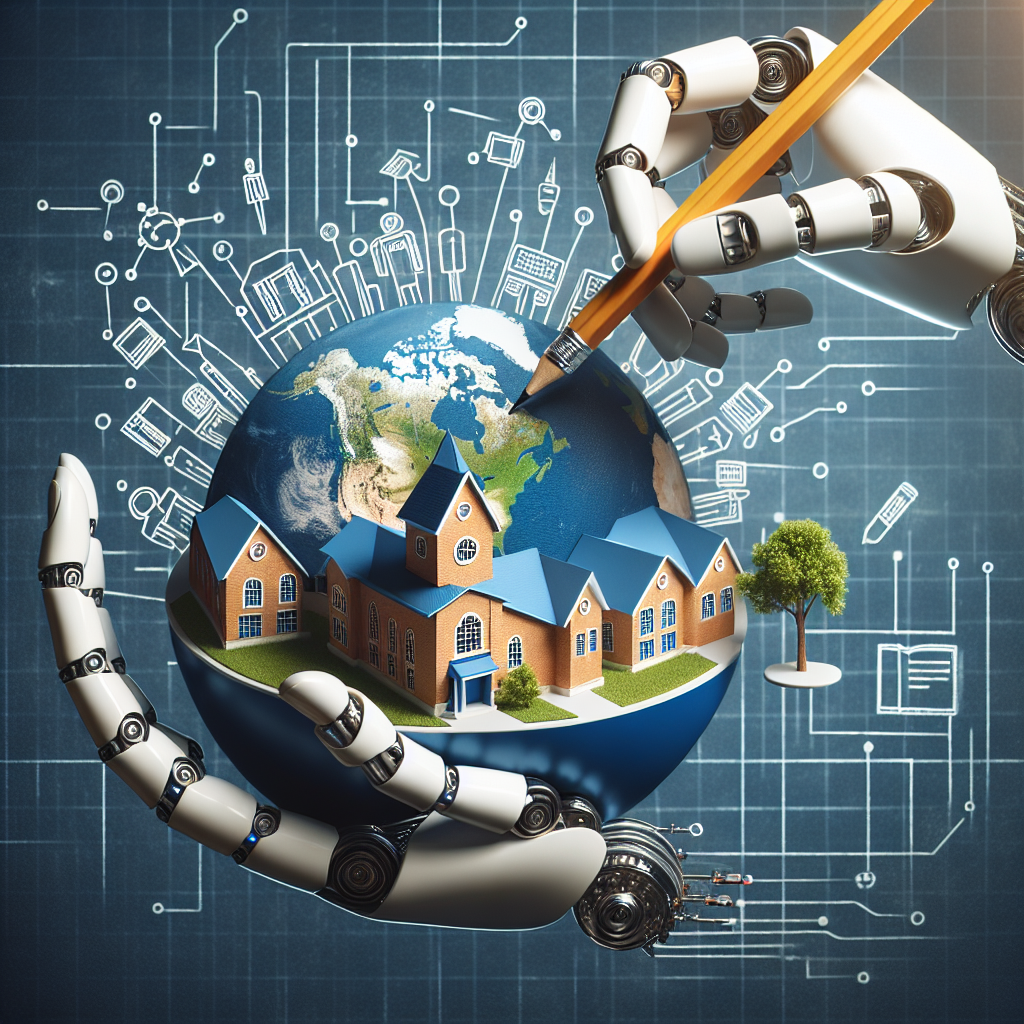Artificial Intelligence (AI) has become a prominent part of our everyday lives, from virtual assistants like Siri and Alexa to predictive algorithms on social media platforms. In the field of education, AI is being used to enhance the learning experience for students, provide personalized tutoring, and streamline administrative tasks for teachers and administrators. While the potential benefits of AI in education are vast, there are also significant risks that need to be considered, especially when it comes to educational equity.
AI in Education: The Potential Benefits
Before delving into the risks of AI in education, it is important to acknowledge the potential benefits that this technology can bring to the table. AI has the ability to personalize learning experiences for students, allowing them to work at their own pace and receive tailored feedback based on their individual strengths and weaknesses. This can help students who are struggling to keep up with their peers or those who excel and need to be challenged further.
AI can also assist teachers in managing their classrooms more effectively by automating administrative tasks such as grading papers and tracking student progress. This can free up teachers’ time to focus on individualized instruction and support for their students. Additionally, AI can help identify areas where students may need additional support or intervention, allowing teachers to provide targeted assistance before issues escalate.
Furthermore, AI has the potential to increase access to education for students in remote or underserved areas. Online platforms powered by AI can provide high-quality educational resources to students who may not have access to traditional schools or teachers. This can help bridge the gap in educational opportunities between urban and rural areas, as well as between developed and developing countries.
The Risks of AI in Education: Impacts on Educational Equity
While the benefits of AI in education are promising, there are also significant risks that need to be addressed in order to ensure that all students have equal access to quality education. One of the primary concerns is the potential for AI algorithms to perpetuate existing biases and inequalities in the education system. AI systems are only as good as the data they are trained on, and if this data is biased or incomplete, it can lead to discriminatory outcomes for certain groups of students.
For example, AI algorithms that are used to assess student performance or recommend educational resources may inadvertently favor students from privileged backgrounds or penalize students from marginalized communities. This can exacerbate existing disparities in educational outcomes and perpetuate systemic inequalities. In order to mitigate these risks, it is crucial for developers and educators to critically examine the data used to train AI systems and ensure that it is representative of all students, regardless of their background or circumstances.
Another risk of AI in education is the potential for students to become overly reliant on technology and lose critical thinking skills. As AI systems become more sophisticated and capable of performing complex tasks, there is a danger that students may rely on these systems to provide all the answers without engaging in independent thinking or problem-solving. This could hinder students’ ability to think critically, analyze information, and develop creativity, which are essential skills for success in the 21st century.
Furthermore, the use of AI in education raises concerns about privacy and data security. AI systems collect vast amounts of data on students’ behavior, preferences, and performance, which can be used to personalize learning experiences and improve educational outcomes. However, this data also raises privacy concerns, as it can be vulnerable to hacking, misuse, or unauthorized access. Students’ personal information must be protected and handled responsibly to prevent potential breaches and safeguard their privacy rights.
In addition, the implementation of AI in education may lead to job displacement for teachers and other education professionals. As AI systems take over routine tasks such as grading papers and providing feedback, there is a risk that teachers may be replaced by technology, leading to job losses and a decrease in the quality of education. It is essential for policymakers and educators to develop strategies to reskill and upskill teachers to work alongside AI systems and leverage their unique strengths to enhance student learning.
FAQs
Q: Will AI in education replace teachers?
A: While AI has the potential to automate certain tasks and enhance the learning experience for students, it is unlikely to completely replace teachers. Teachers play a crucial role in providing personalized support, guidance, and mentorship to students, which AI systems cannot replicate. Instead, AI can complement teachers’ efforts by automating routine tasks and providing valuable insights to inform instructional decisions.
Q: How can educators ensure that AI in education promotes equity and diversity?
A: Educators can promote equity and diversity in AI systems by critically examining the data used to train these systems and ensuring that it is representative of all students, regardless of their background or circumstances. Additionally, educators can advocate for policies and practices that prioritize equity, diversity, and inclusion in the development and implementation of AI technologies in education.
Q: What are some best practices for using AI in education?
A: Some best practices for using AI in education include: 1) Ensuring that AI systems are transparent, explainable, and accountable to stakeholders. 2) Engaging in ongoing professional development to build educators’ capacity to use AI effectively. 3) Monitoring and evaluating the impact of AI on student outcomes and adjusting implementation strategies accordingly. 4) Prioritizing data privacy and security to protect students’ personal information.
In conclusion, AI has the potential to revolutionize education by personalizing learning experiences, improving student outcomes, and increasing access to quality education. However, it is essential to consider the risks and challenges associated with AI in education, especially when it comes to educational equity. By addressing biases in AI algorithms, safeguarding privacy and data security, and promoting critical thinking skills, educators can harness the power of AI to create more inclusive and equitable learning environments for all students.

